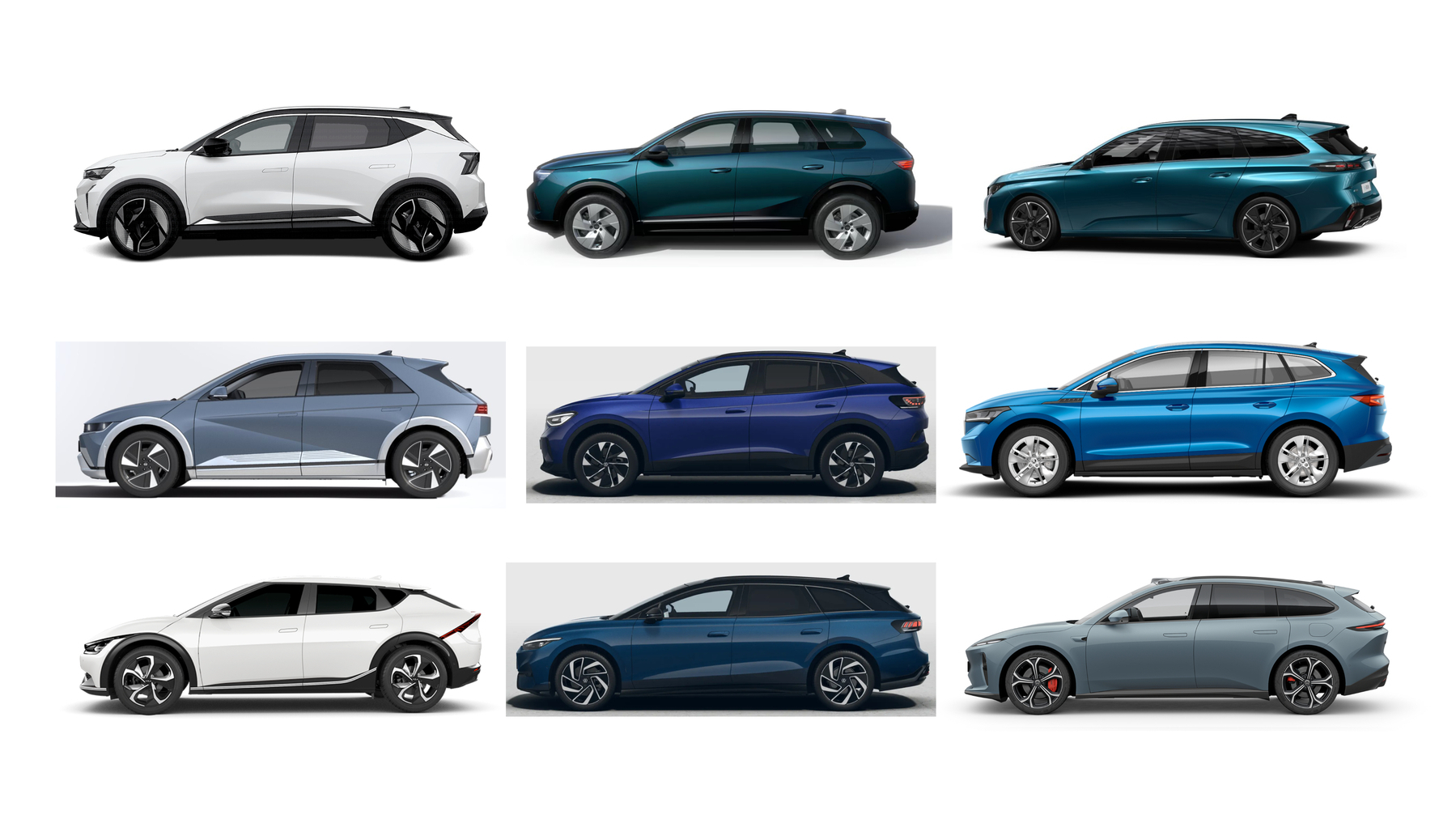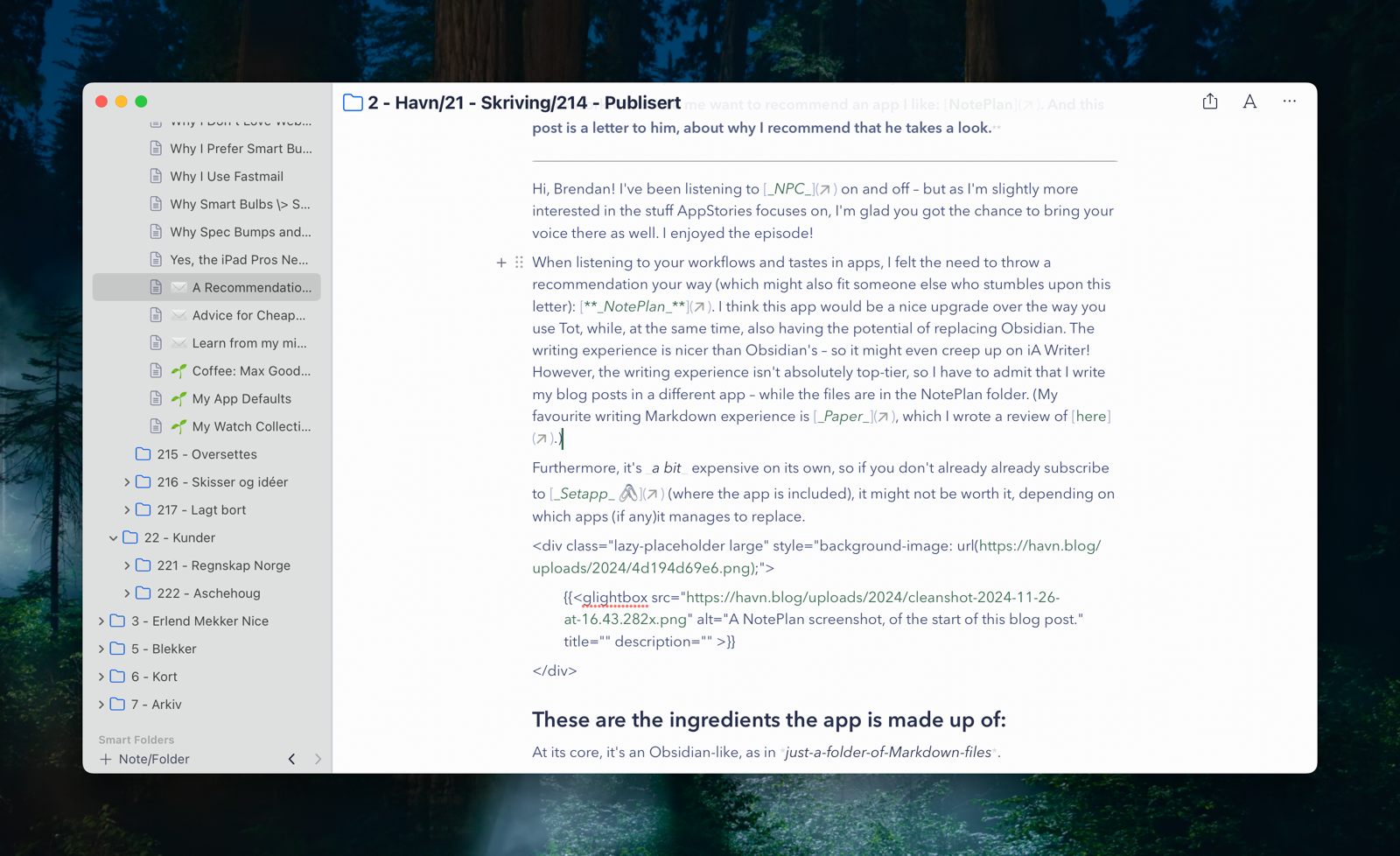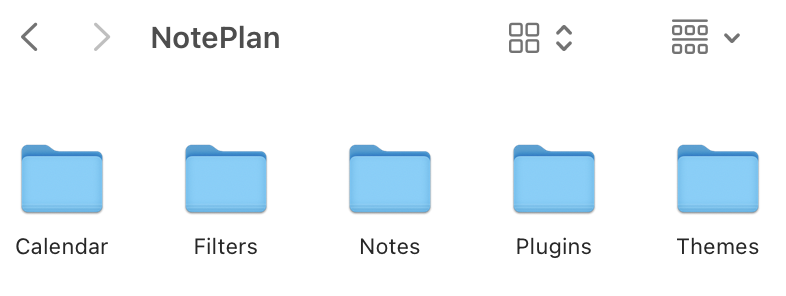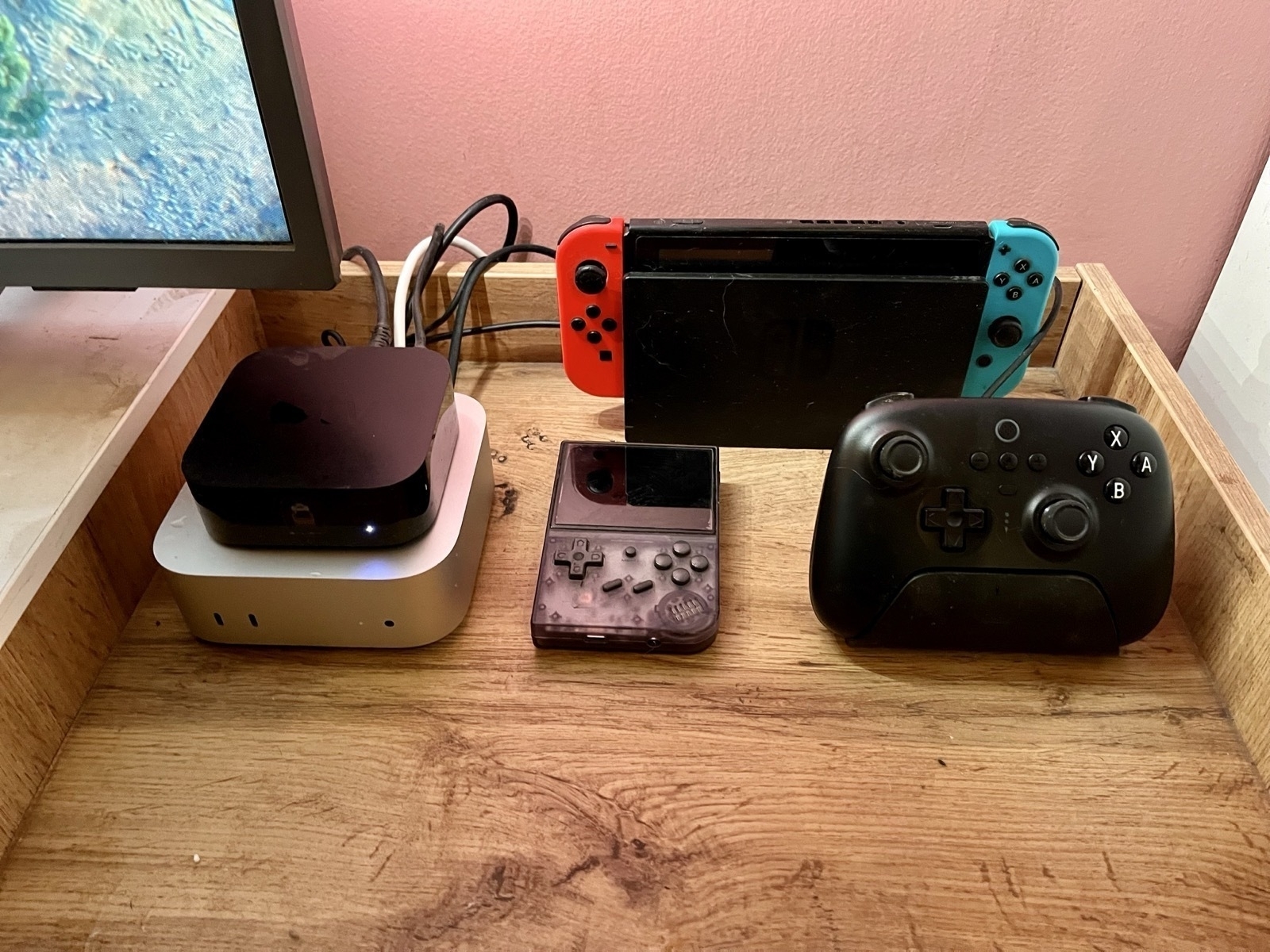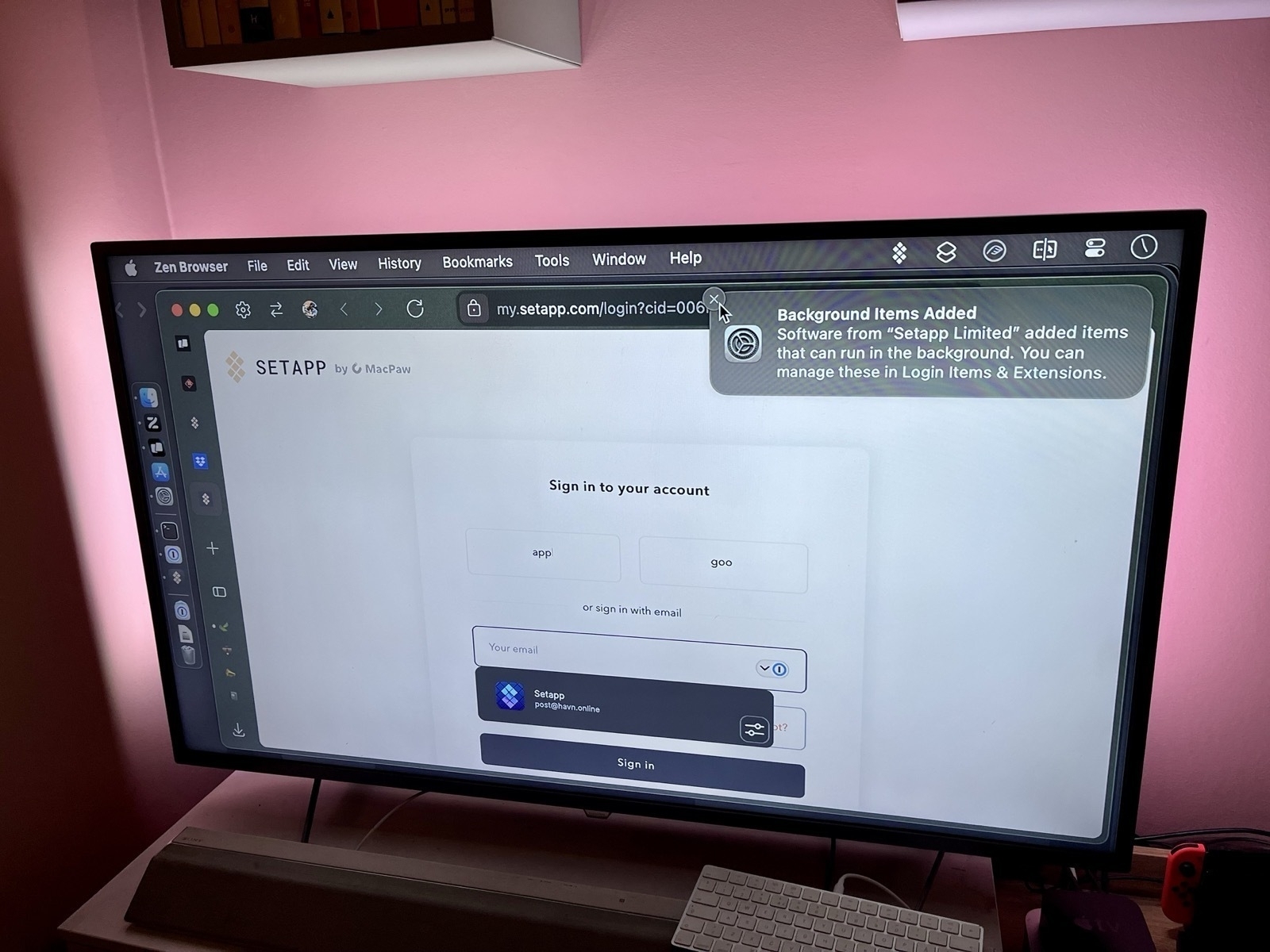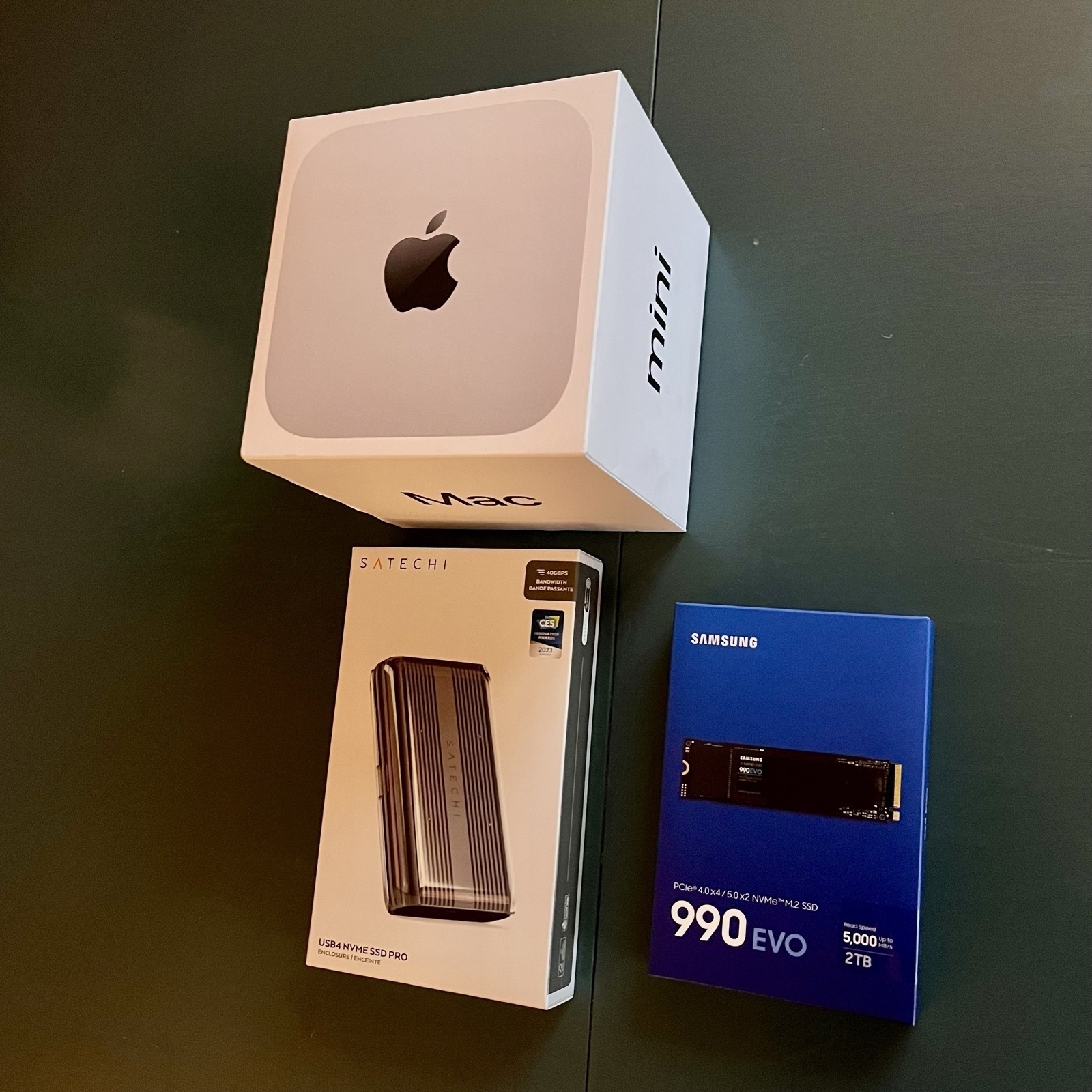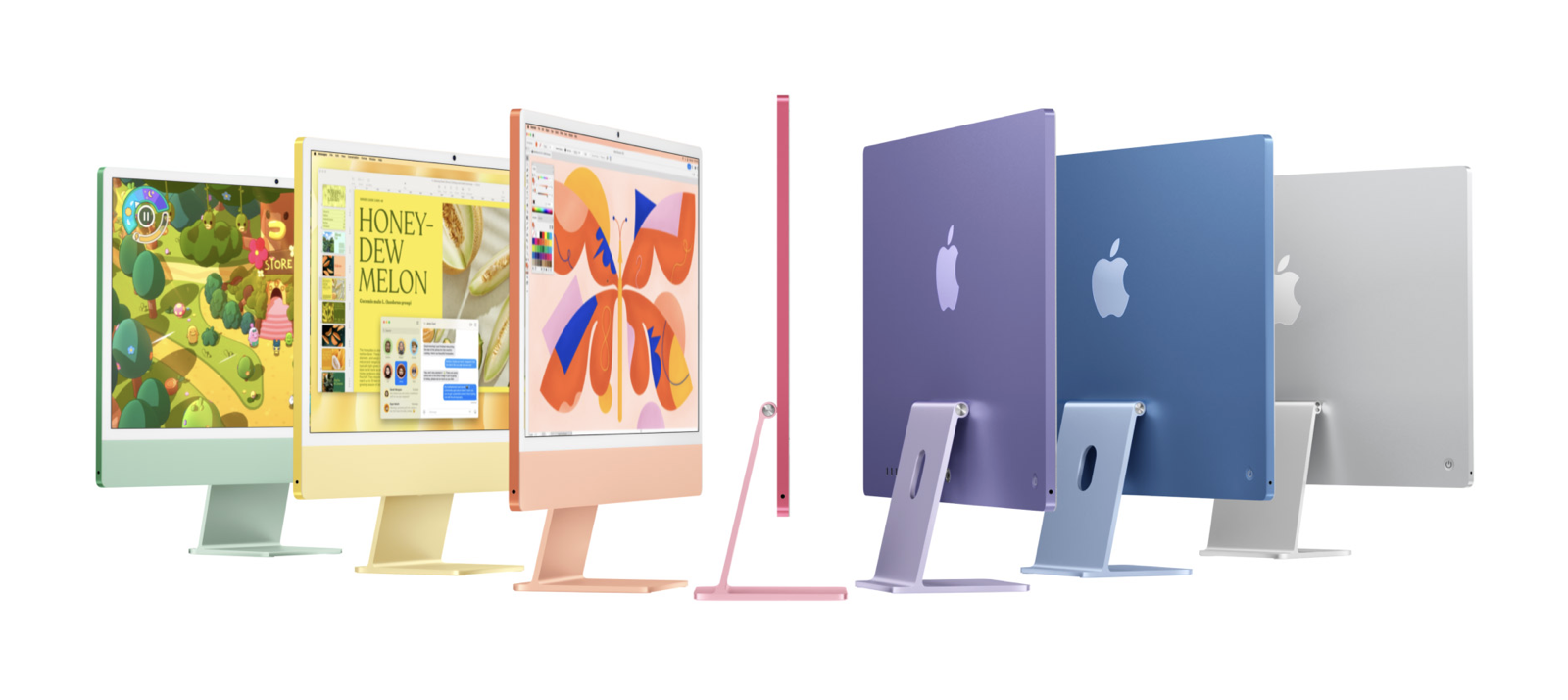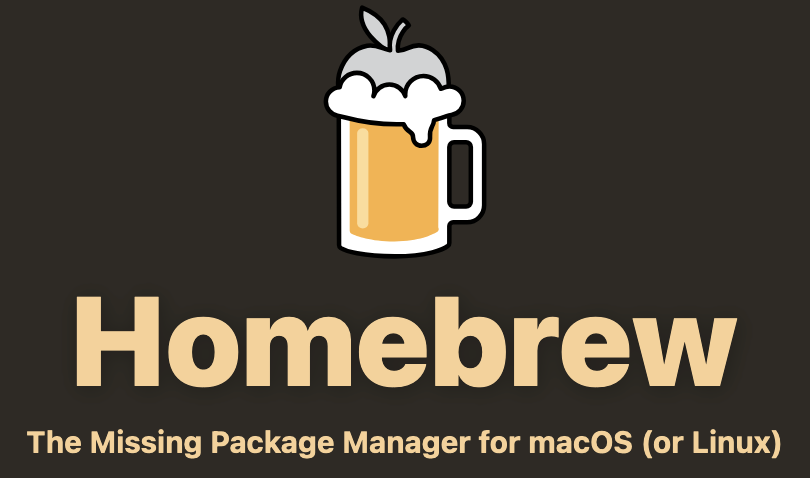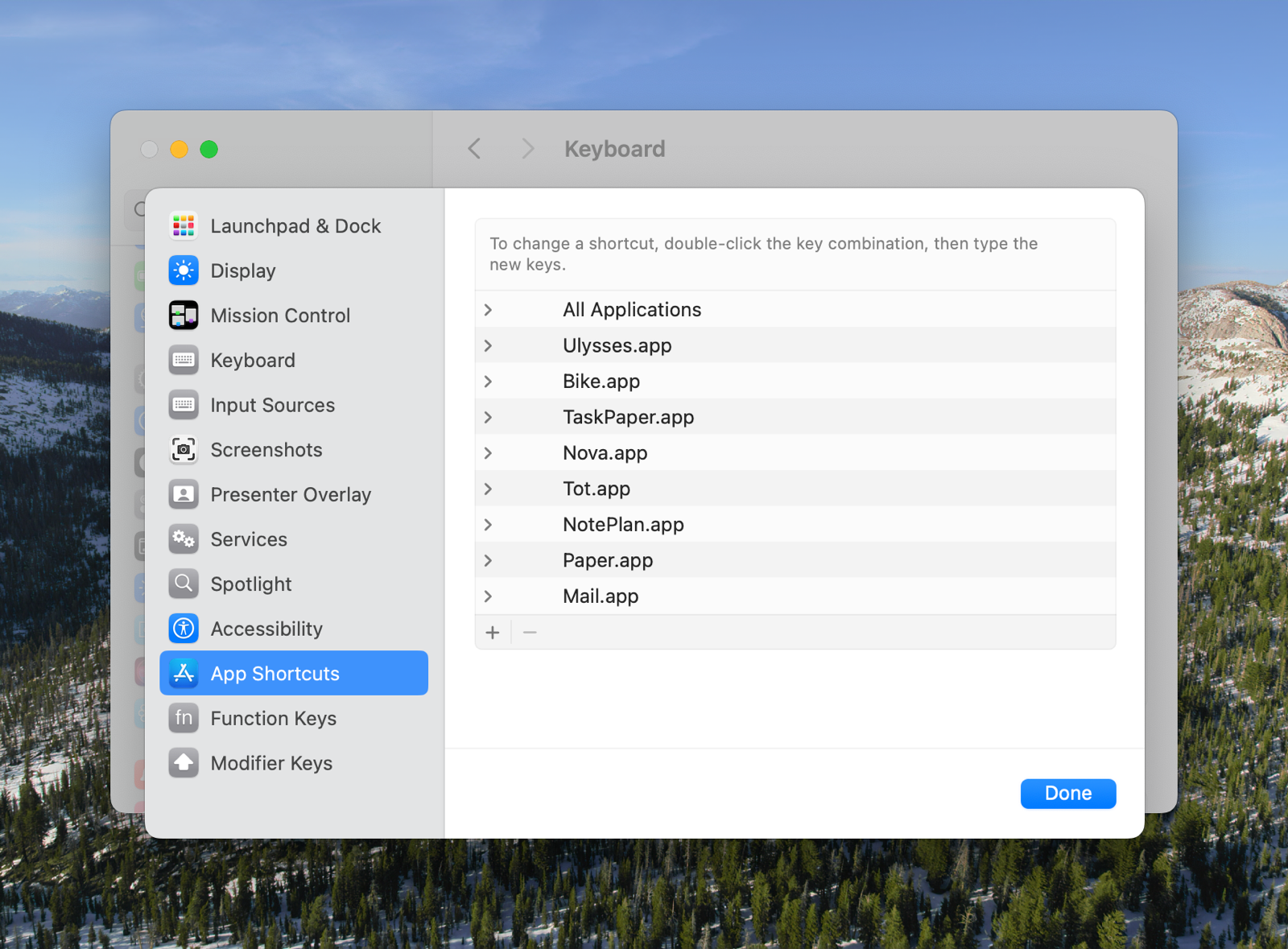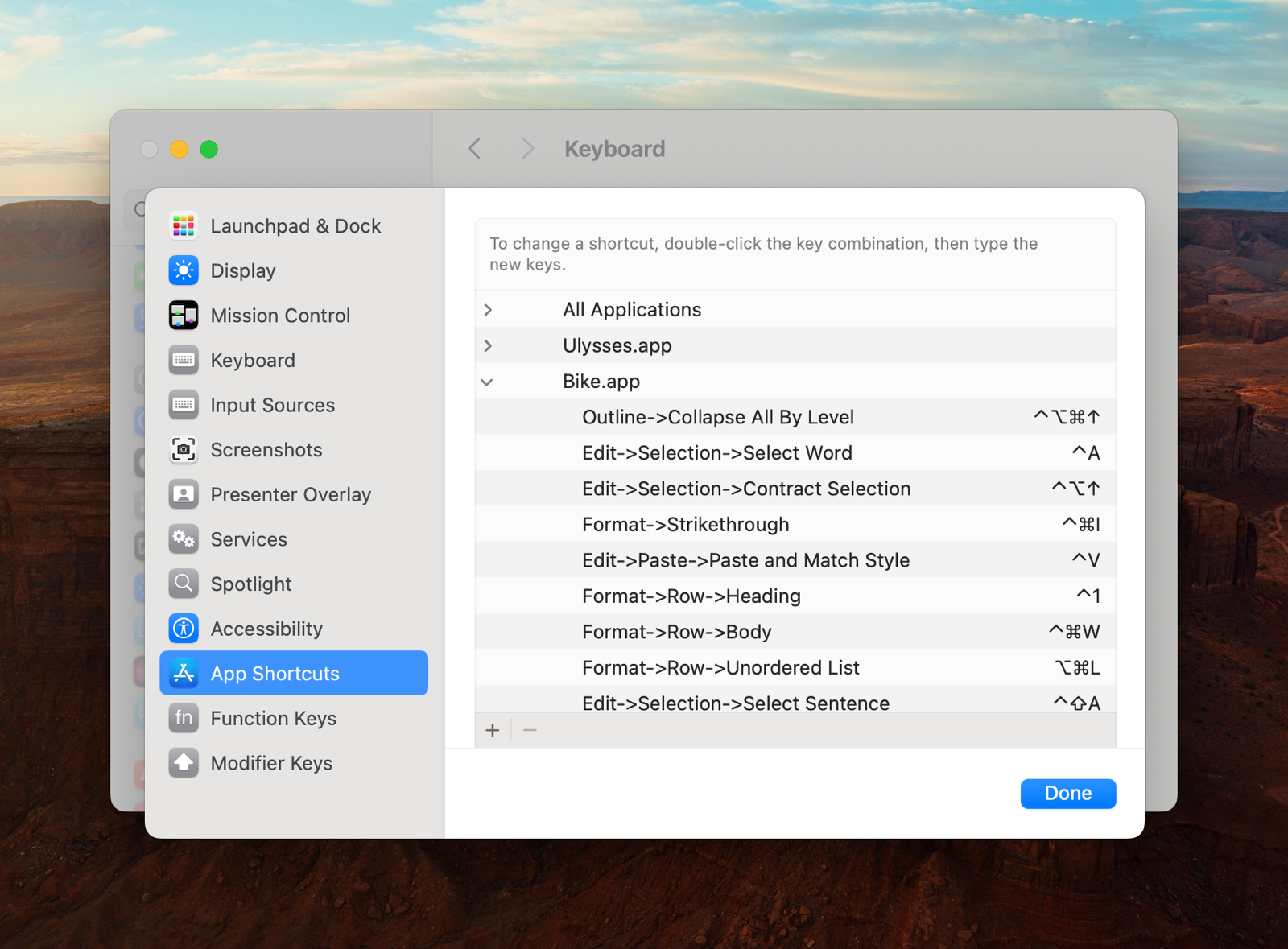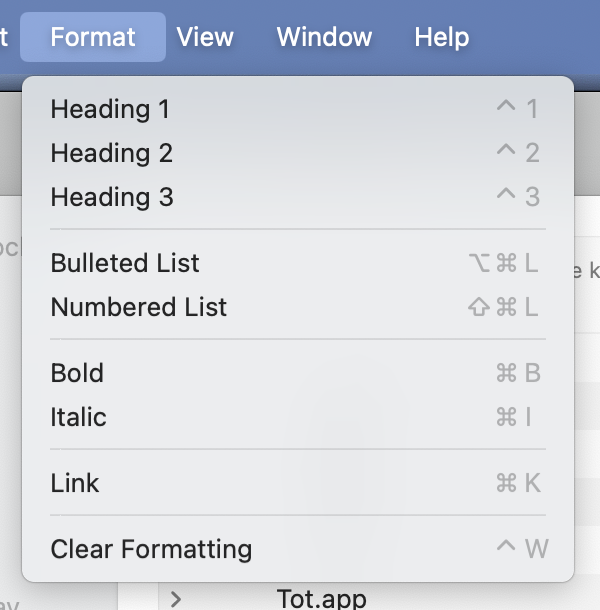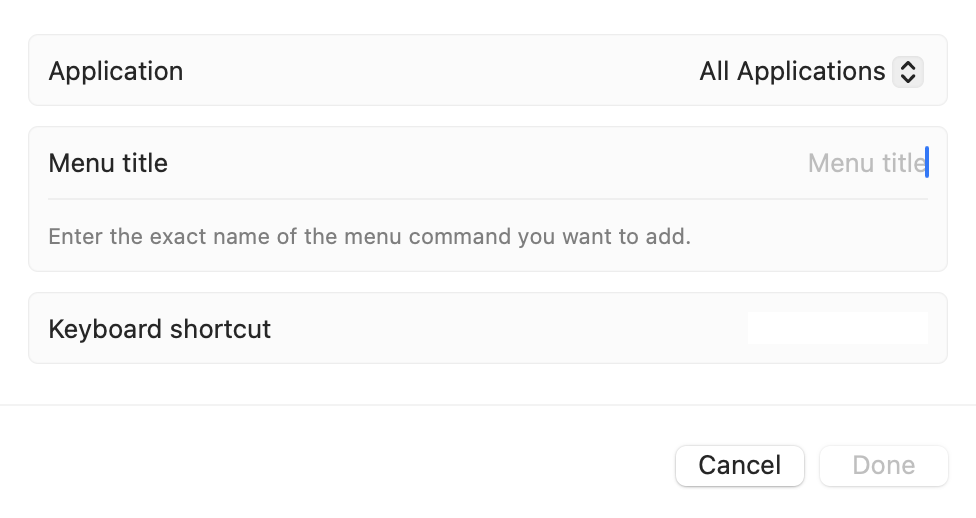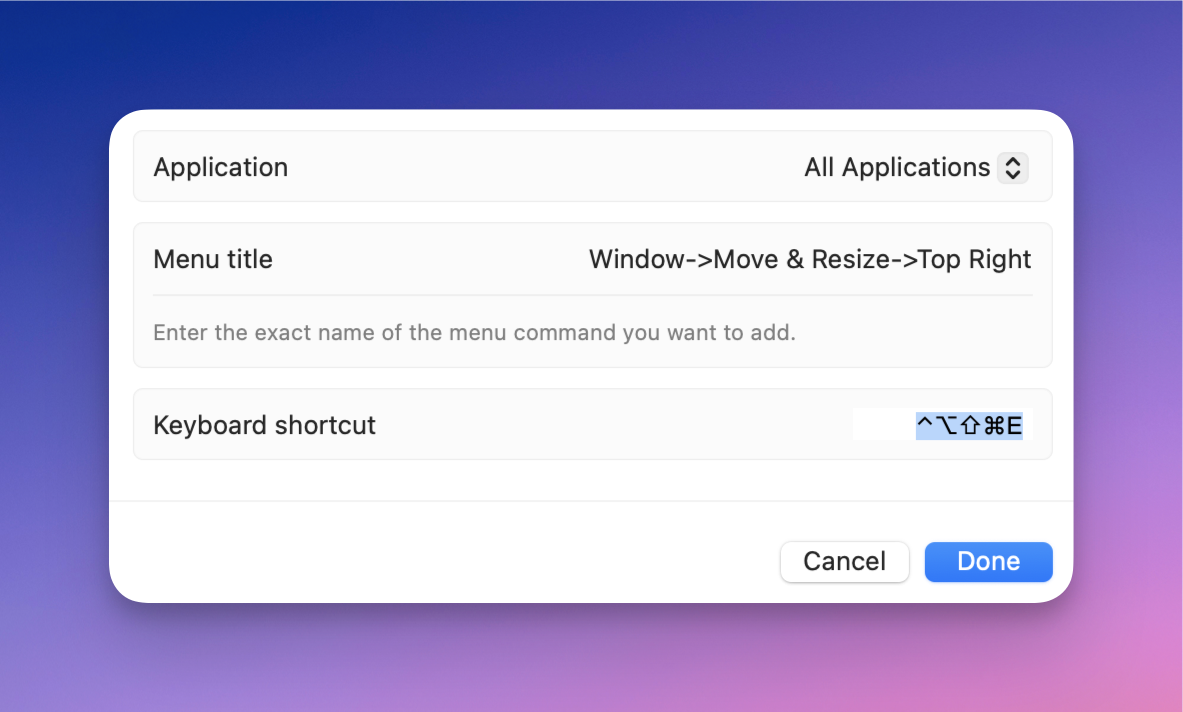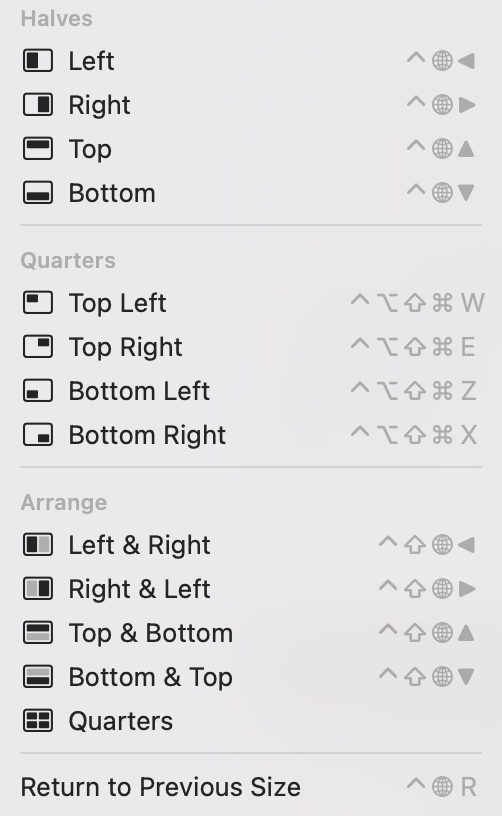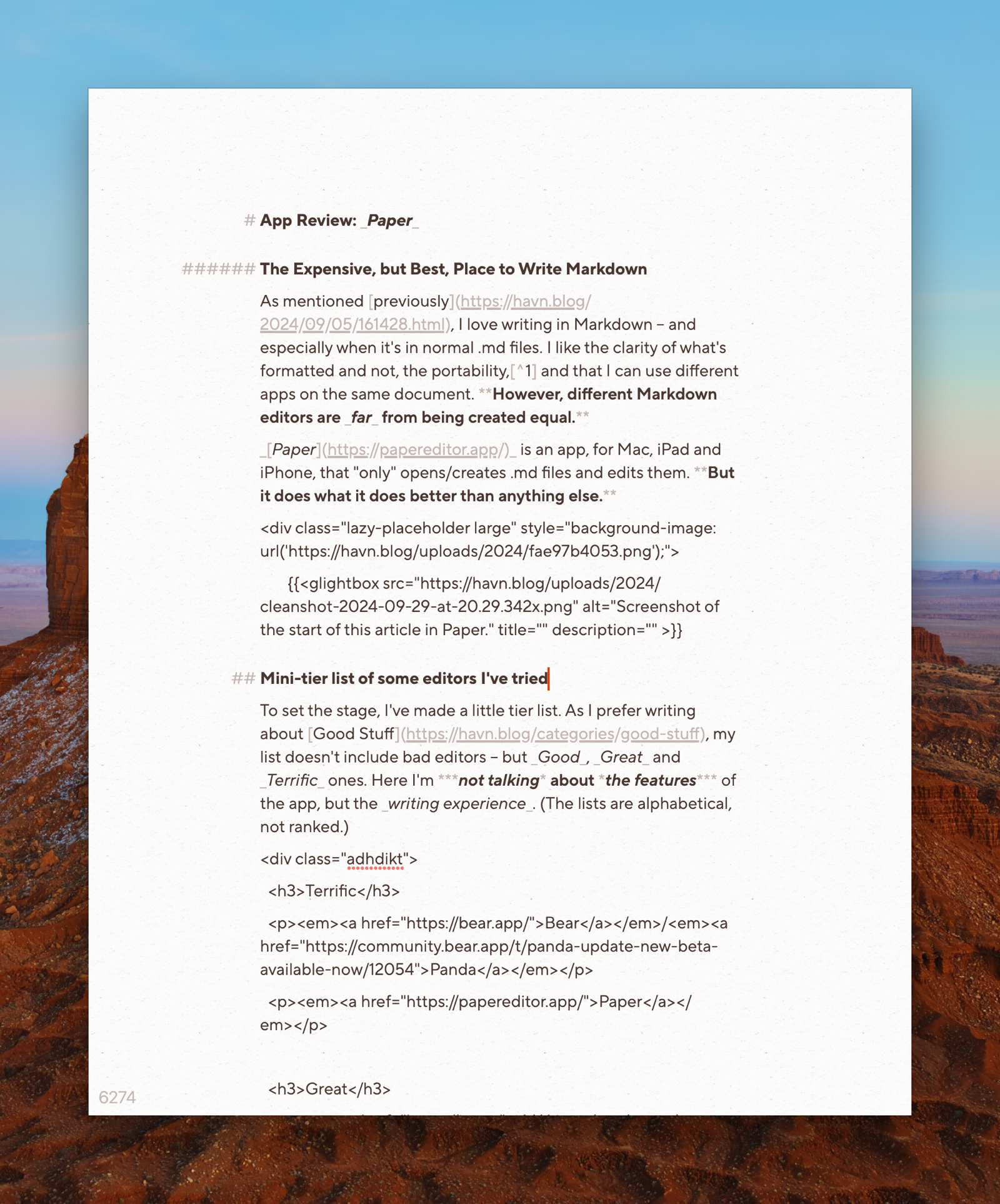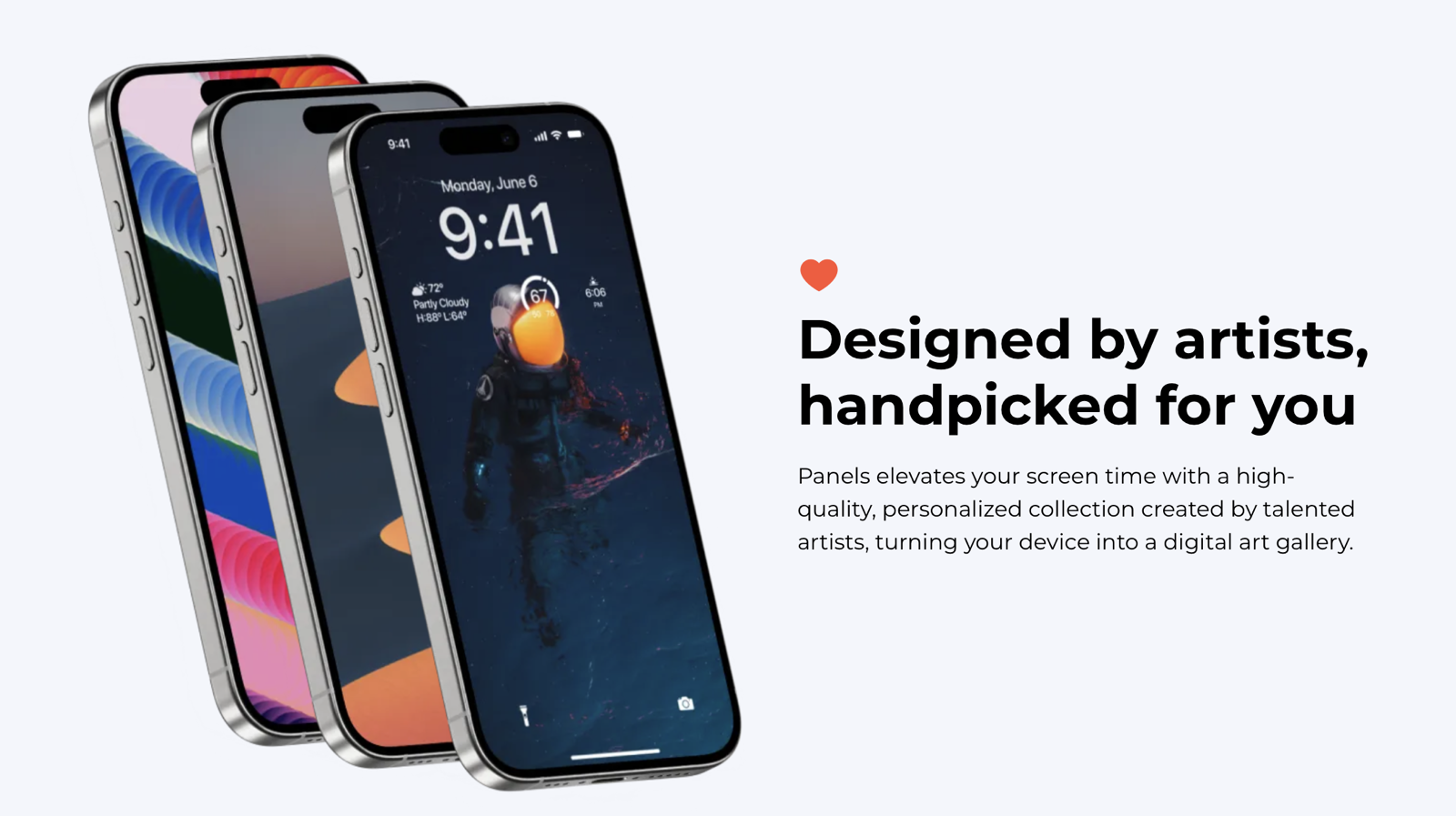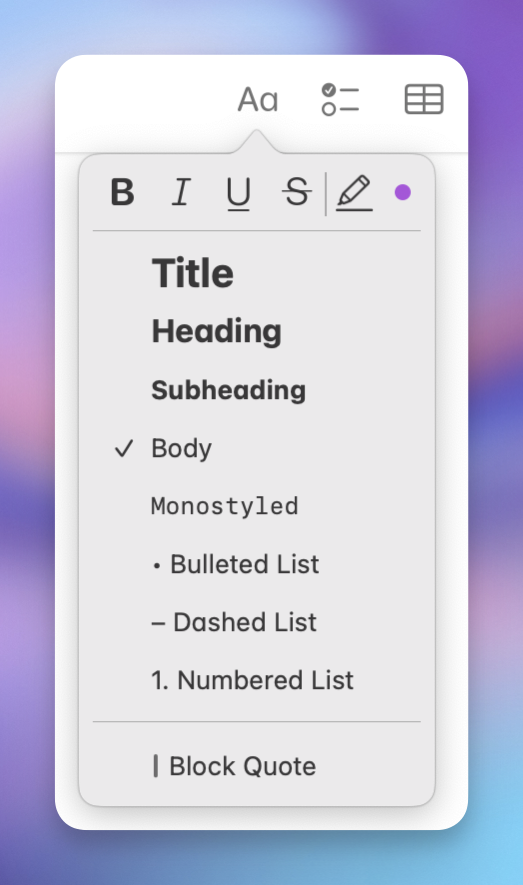Technology
- templates (with Javascript support!),
- backlinks,
- embedded images,
- code syntax highlighting,
- foldable headers and list items,
- synced lines,
- (light) front-matter support,
- voice notes,
- sketching and hand-writing transcripts,
- sharing live links to notes with others, and more.
- How would you feel about buying the factory’s products?
- And would it matter if you lived upstream or downstream from it?
- Their main markets, especially the smart phone one, is extremely large in absolute terms.
- As opposed to things like the gaming market, it's one everyone* has to participate in.
- Many people game on a PS5, but also on PC and mobile, etc. Very few daily more than one phone OS.
- A complete monopoly isn't the only way to have anti-trust issues. For instance, a duopoly doesn't necessarily mean healthy competition.
- Est in Lorem mollit aliquip eu exercitation consectetur irure elit quis voluptate minim sit.
- Eniam
- Consectetur
- Deserunt
- Aute
- Commodo
- Deserunt
- Cillum magna consectetur eu ut aliqua ipsum duis cupidatat adipisicing nulla laborum tempor. Officia consequat est ullamco cillum cillum ipsum.
- Labore minim eiusmod excepteur do pariatur commodo nulla anim pariatur amet irure ipsum. Culpa adipisicing cupidatat incididunt commodo exercitation amet sint esse aliqua.
- Officia enim est exercitation
- Adipisicing pariatur
- Enim tempor pariatur
- Nostrud voluptate excepteur
- Ad magna pariatur
- Connecting some external storage, and using it for
- backups,
- and as a media server. (Jellyfin, perhaps?)
- Maybe use it for some smart home stuff.
- And I’ll also connect it to my TV, via HDMI, for some light big-screen gaming. (Like UFO 50! But also things that I want to play with a controller that’ll run at least as well as on my M1 Pro 16 GB laptop.).
- 3x Thunderbolt 4/5
- HDMI
- Ethernet
- Power
- 2x USB-C
- Mini-jack
- How many ports should the enclosure size account for?
- And then, which ports should those be, and where?
- While in laptop mode, I want it at the bottom, with automatic hiding.
- But while on my 27" external display, I want it to be on the left, smaller, and always showing.
- I always resize with just my left hand
- I’ve made a “grid” that uses Hyperkey (Caps Lock) + a letter:
WandEis Top Left Quarter and Top Right QuarterAis Left Half,Sis Maximise/Fill, andDis Right HalfZandXis Bottom Left Quarter and Bottom Right Quarter
- Pretty fiddly – you can’t even paste text, as it will think you’re trying to set
Command + Vas the hotkey - Doesn’t get backed up – you have to do it again if you reinstall macOS (Pro tip: Take a screenshot to “back up”!)
- Only works on menu bar items
- Works without third-party software
- Will change the displayed hotkey in the menu bar – making it easier to remember
- … you write a lot in Markdown – especially in short to medium lengths,
- … you don't mind (or even prefer) working with files instead of libraries,
- … you value the quality and feel of software, like $1.000 Japanese garden shears.
- If we agree that open social media, free from ad-tech monopolies, is a good thing, everyone deserves the chance to take part in it.
- This includes those who use online platforms to make a living, and those who want to follow them.
- And resources flowing through the ecosystem, makes it more realistic to achieve this goal.
- The name
- The price
- The split
- The privacy
- In general, I like to rely on third-party services.
- I also like the portability of Markdown, and being able to use several apps on the same files.
- I like that, in NotePlan, I can use the same app for notes and tasks.
- Good apps on both Mac, iPad and iPhone, while also being accessible on the web
- Pretty good collaboration features, with shared notes and folders
- More than enough options for formatting
- Collapsible headings
- Embedding of files, photos, and illustrations (especially good with PDFs)
- Audio recordings
- Links between notes (no backlinks, though)
- Tagging and smart folders
- Quick notes (which Apple, selfishly, reserves for itself)
- Math notes.
- Many of the apps are one-time purchases (but often not with unlimited updates), so it’s difficult to compare with a single subscription.
- Many of the apps I use, I wouldn’t pay for if it weren’t included in Setapp. I’d either use a free/cheaper alternative, or just not use something like that at all.
- The left one is a specific one for working with subtitles. It splits the selected line into two, down the middle.
- This wraps text in
<figcaption>, and is used for blog posts. - This wraps the text in a “callout div”, that I use to create callouts like the one about the affiliate link up top.
- If I want to format text in image captions or callouts, I have to use HTML. This creates an HTML hyperlink,
- this is italics,
<em> - and this is bold.
<strong> - The pen is some custom stuff for my band’s website.
- The Last One Will Title Case the Selected Text.
I'm Getting a New Car, and I Don't Care About CarPlay
Am I insane?
Time and time again, I’m hearing people say that they wouldn’t buy a new care without Apple CarPlay/Android Auto.1 (The after-show on the latest episode of Mac Power Users was the last example.) I also hear how stupid some companies are for not including these systems in their cars. And I just don’t get it. Or, to be honest: I think I know some reasons why my opinion seems to differ from most people’s.
I live in the land of EVs
Norway has been subsidising EVs heavily for many years. And I think this statistic shows the effect well:
| Year | EV market share |
|---|---|
| 2020: | 54.3% |
| 2021: | 64.5% |
| 2022: | 79.3% |
| 2023: | 82.4% |
| 2024: | 88.2% |
To put things into perspective: The EV market share in the US is currently at 8.9%, which is well below the 13% we had all the way back in 2014 – ten years ago.2
A welcome effect of this, is that we also have a healthy used-market for EVs – so I literally can’t remember the last time I talked to someone who weren’t buying an EV.3 I’ll come back to why this is important!
My experience
The car I’ve had for the last 3 years, is a 2019 Tesla Model 3, which I bought used. My wife and I are expecting our first kid in May, and we have a large dog – so we need something larger in the next 6 months. That’s why I’ve been looking at new cars again.
I’m pleased with my Model 3! And the Model Y would probably be the best purchase for us. But I simply don’t want to buy one, due to *gestures in the general direction of Elon Musk*. Luckily, we have tons of options over here. But when I started doing my research, I found myself not caring about whether the cars had CarPlay – even though I’m heavily entrenched in the Apple ecosystem.4
The reasons I haven’t missed CarPlay
✉️ A Recommendation for the Great Note-Taking and Task Management App, NotePlan
In the latest episode of AppStories, Brendon Bigley filled in for Federico Viticci. Among other things, they discussed the apps he used, and he said he had research (and some writing) in Obsidian, while using the neat little post-it app Tot for “task management”. By task management, he meant that he kept his daily tasks in a note, and just deleted it at the end of the day.
This workflow made me want to recommend an app I like: NotePlan. And this post is a letter to him, about why I recommend that he takes a look.
Hi, Brendan! I’ve been listening to NPC on and off – but as I’m slightly more interested in the stuff AppStories focuses on, I’m glad you got the chance to bring your voice there as well. I enjoyed the episode!
When listening to your workflows and tastes in apps, I felt the need to throw a recommendation your way (which might also fit someone else who stumbles upon this letter): NotePlan. I think this app would be a nice upgrade over the way you use Tot, while, at the same time, also having the potential of replacing Obsidian. The writing experience is nicer than Obsidian’s – so it might even creep up on iA Writer! However, the writing experience isn’t absolutely top-tier, so I have to admit that I write my blog posts in a different app – while the files are in the NotePlan folder. (My favourite writing Markdown experience is Paper, which I wrote a review of here.)
Furthermore, it’s a bit expensive on its own, so if you don’t already already subscribe to Setapp 🖇️ (where the app is included), it might not be worth it, depending on which apps (if any) it manages to replace.
These are the ingredients the app is made up of:
At its core, it’s an Obsidian-like, as in just-a-folder-of-Markdown-files.
It does have plugin support, but it’s still far from as customisable as Obsidian.
However, if you’re mostly on Apple devices, it’s much more native-feeling than most Electron apps.1
As I heard you use Windows at work, it could be valuable that NotePlan has a web app as well – even though it’s not as good as the native experience.
It offers powerful note-taking features, like
I also like that it has a command-bar interface (with a fast search), and powerful custom themes.
But the Secret Sauce is the way it handles tasks and calendar notes! But before I go into that, I wanted to touch on …
How you can use it in conjecture with other apps, like Obsidian:
As mentioned, the NotePlan library is just a folder, that looks like this:
The Notes folder holds your regular notes, while the Calendar folder holds the calendar notes. If you wanted to dip your toes into the app, while using Obsidian in parallell, you could just add your Obsidian vault to the Notes folder. Then you just point Obsidian to either just folder, or the whole NotePlan folder (so you’ll get access to the Calendar folder as well). I think note links are cross-compatible between Obsidian and NotePlan.
Please Care About the Factory's Effect on the River
No Matter Where You Live
Let’s imagine a town, where the river is the main source of fresh water for everyone. Then, one day, someone builds a factory, near the middle of the river. A side effect of what the factory produces, is that it releases toxic waste into the river. The owners are aware of this – but they won’t do what’s needed to clean it up, as it would cut into their profits.
Blog posts about Substack
Today I read John Gruber’s blog post Regarding – and, Well, Against – Substack, which also linked to Anil Dash’s post “Don’t Call It a Substack”.
We constrain our imaginations when we subordinate our creations to names owned by fascist tycoons. Imagine the author of a book telling people to “read my Amazon”. A great director trying to promote their film by saying “click on my Max”. That’s how much they’ve pickled your brain when you refer to your own work and your own voice within the context of their walled garden. There is no such thing as “my Substack”, there is only your writing, and a forever fight against the world of pure enshittification.
Anil Dash
This is a great point – and all three of us are in agreement here!
A slight disagreement
However, while I have a slight (and perhaps unimportant) disagreement with the next quote from Dash, I strongly dislike Gruber’s comments on it.
Substack is, just as a reminder, a political project made by extremists with a goal of normalizing a radical, hateful agenda by co-opting well-intentioned creators’ work in service of cross-promoting attacks on the vulnerable. You don’t have to take my word for it; Substack’s CEO explicitly said they won’t ban someone who is explicitly spouting hate, and when confronted with the rampant white supremacist propaganda that they are profiting from on their site, they took down… four of the Nazis. Four. There are countless more now, and they want to use your email newsletter to cross-promote that content and legitimize it. Nobody can ban the hateful content site if your nice little newsletter is on there, too, and your musings for your subscribers are all the cover they need.
Anil Dash
Substack is the factory in my simple analogy at the top. And “normalizing a radical, hateful agenda” is the toxic waste in the river. My small disagreement, is that I don’t think the factory was made with the purpose of polluting the river.
Some might say that’s an unimportant distinction, and that what matters is that they don’t care that they’re doing it. And I get that! My point is that I don’t want to give people the opportunity to think, “Of course they didn’t create an entire factory just to pollute 🙄 – so let me disregard all the points about the factory’s effect on the river."1
Gruber’s post also shows another way this type of hyperbole can be unhelpful:
I think Substack sees itself as a publishing tool and platform. They’re not here to promote any particular side. It makes no more sense for them to refuse to publish someone for being too right-wing than it would for WordPress or Medium or, say, GitHub or YouTube. Substack, I think, sees itself like that.
John Gruber
Technically, I think he’s right here.2 But Dash’s (I believe, exaggerated comment) allowed the discussion to be dragged into Substack’s intent rather than effect – which is not unimportant, but way less important.3
A large disagreement
However, I really don’t like where Gruber goes next:
What I can say, personally, is that I read and pay for several publications on Substack, and for the last few weeks I’ve tried using their iOS app (more on this in a moment), and I’ve never once seen a whiff of anything even vaguely right-wing, let alone hateful. Not a whiff. If it’s there, I never see it. If I never see it, I don’t care.
John Gruber
Gruber doesn’t even try to dispute that the factory is poisoning the river. The only thing he’s saying is that, as someone who lives upstream from it, he doesn’t care whether it pollutes. His water tastes good, so why should he care?4
Alternatives to Forcing Apple to Provide Solutions to Their Competitors
On Anti-Trust, APIs, and Market Participation
This week’s episode of the Upgrade podcast, was a good one as usual. I especially liked the discussions surrounding a potential pair of Apple smart glasses, and the way this connects to the regulatory scrutiny Apple is under currently.
Jason refers to the fact that Federico Viticci loves the Meta Ray Bans, but still really wants Apple to create a pair. And he then asked what I deem to be a crucial question:1
Do we want smart glasses from Apple because of what they do better than the competition, or because of what they are allowed to do, but that they bar their competitors from doing?
Let me use earbuds as an example, as they are more common. I’m delighted with my AirPods Pro – and they’re a better fit for me, and my Apple hardware, than a pair of Sony buds (for example). But when looking at the reasons why I pick one over the other, here’s something I think it’s crucial to distinguish between: Which of them are due to things Apple does better, in fair competition (maybe I prefer the sound, or noice cancelling), and which of them are due to things Apple blocks Sony from doing (like pairing fairy dust)?
A side point: Why I think Apple's main markets require more regulatory scrutiny than something like the gaming market:
This brings me to a clip I wanted to share from the podcast, where I agree with a lot, but wanted to add something:
More solutions
What I wanted to add, was that there are more solutions than Apple being forced to make stuff for its competitors. And I think the European Commission holds this opinion as well.
Solution 1: Don’t block
Monitor Resolution Guide for macOS
Seeing as Apple just released a great monitor-less Mac, in the new M4 Mac Mini1, it makes sense that there’s more external display discussions surrounding Macs. After answering a couple of questions on Reddit here, I thought I’d try to write a guide. Because, if you don’t use a screen made by Apple, things get a bit complicated…
To make this as timeless as possible, I won’t discuss specific monitor models. Instead, I’ll do my best to foster understanding, that will help in your research.
Two uses of the term “resolution”
One way of using it, is when discussing the actual number of pixels a screen has. For instance, a regular 4K screen has 3840 ✕ 2160 pixels. This can be called the physical resolution.
However, look at this image, where I went into settings to set my 4K TV to display as 540p:
Changing the setting, luckily, doesn’t delete a bunch of pixels on my TV. So in this context, it can be useful to think of the resolution more like the size of the rendering. This can be called the logical resolution.
The relationship between the physical and logical resolutions matters
The physical and logical resolution can be the same. But for high-resolution screens, this will usually make things too small. And in this context, the resolutions 4K (3840 ✕ 2160) and _1080p_ (1920 ✕ 1080) have a special relationship: The former is exactly 2x the width and 2x the height of the latter. This is why you’ll see people mention 4K being “2x” that of 1080p. But keep in mind: it technically has 4x the number of pixels (since it’s 2x two times).
Let me try to explain why that’s important
My Setup for the M4 Mini as a Secondary Mac
NAS, Media Server, and Light Gaming
I spent the weekend setting up my little new Mac – and I have to say: it went pretty smoothly! Here’s what I did, and how you can do it yourself if you like.
The hardware
As Apple’s upgrade prices are certified insane, I went for the absolute base model. I did briefly consider getting 10 gig Ethernet – but I had to change too much about my setup to get any benefits from it. And I don’t really need that fast a connection for my use case.
16 GB of ram is enough for me, but the built-in 256 GB of storage is obviously too little. But as it’s a stationary machine, getting external storage works great.
Some drives will use regular USB speeds (for instance USB 3.2 Gen 2). These are cheaper – but if you go for USB 4 or Thunderbolt 3+ you will get about three times the speed. If you, like me, want to run programs (like games) straight from the disk, you’ll probably want the latter.
Today's Plan: Setting Up My Mac Mini NAS
I just picket up my new Mac Mini, which I intend to use as a server (backups and media) and light gaming machine, connected to my TV.
Upgrade prices are a joke – so I went for the base model + a Thunderbolt enclosure, and a Samsung 990 EVO 2 TB SSD (which speeds might be an overkill – but it was on sale). Wish me luck! (Will report back later.)
This is a blog post to test (and show off) my blog's design
This is a subtitle, made with h6
Today, November 5th 2024, there’s something wrong with the performance on my blog – especially when it comes to Chromium browsers. To help me fix this, I’ve made this blog post, so I more easily can check the features of the design. So if you check out the site this week, the css might be a bit crazy.
I admire sites like The Jolly Teapot, that are super minimalistic and fast. But it’s easier when you don’t have images, videos, etc. on your blog! And I’m a bit too addicted to design details and effects – while also being a total amateur. But I will try to make things work better, while still being a pleasant place to visit when you’re out surfin'!
Occaecat nulla culpa enim sunt reprehenderit dolor consequat exercitation Lorem. Consectetur cillum officia sit veniam. Aliqua consequat minim minim pariatur ipsum ea nostrud dolor duis incididunt qui dolore culpa minim.1 Est minim culpa cupidatat consectetur. Magna est aute enim elit cillum aute aliquip tempor tempor cupidatat ipsum.
Duis eu fugiat fugiat id reprehenderit excepteur reprehenderit do tempor irure excepteur laborum deserunt Lorem. Irure aute duis exercitation. Commodo pariatur pariatur deserunt laborum ad sit elit. Officia pariatur irure proident.
Heading 2
Heading 2 with bold and italics
| Heading 1 | Heading 2 | Heading 3 |
|---|---|---|
| Item 1A | Item 2A | Item 3A |
| Item 1B | Item 2B | Item 3B |
| Item 1C | Item 2C | Item 3C |
Occaecat eiusmod sint veniam minim. Fugiat voluptate Lorem velit dolor excepteur in dolor sunt. Non ut proident sunt id quis ea Lorem tempor nisi ad quis duis nisi elit. Est qui sit nulla. Consequat veniam consectetur deserunt aute sint et id.2 Sit anim qui cupidatat in sint esse commodo. Culpa pariatur non laboris pariatur duis id cupidatat enim velit sint aliqua veniam enim ipsum. Non Lorem sunt sunt.
Something is off about the performance on my blog… Especially on Chromium! While part of me would enjoy saying “Works best on Firefox”, I still have to do something about it.
Well, I have been looking for an excuse to rewrite and optimise my CSS! I’ll start tomorrow. 💪🏻 (Wouldn’t mind advice!)
Why Spec Bumps and Yearly Device Releases Are Good
This week, Apple released multiple new Macs. And we’re not that far off the yearly iPhone release. And in the after-math of this, I’d like to address some comments I see a lot.
Because, the Mac releases were, in general, very unremarkable. The jump from M3 to M4 isn’t the largest, and they got few other new features.1 So I’ve seen plenty of comments along the lines of this just being an unnecessary and weak spec bump.
And just as predictable as the yearly phone releases, are the comments that this schedule pushes people to upgrade every year.
However, while I’m, in general, pretty sceptical towards the tech giants:
I don’t think these things are big problems
If people have data to prove otherwise, I wouldn’t mind seeing it! But I just don’t think people upgrading yearly is a big problem. Firstly, I don’t think (or at least don’t hope!) many people do it. And I assume most of those who do, will pass their “old” devices on – either to family members and friends, or by selling them on the used-market (through refurb stores, or privately). Personally, I don’t think, at least Apple, really communicates that people should – even though they of course brag about the latest devices.
I reckon most people upgrade their devices something like every 3–7 years. And every day there is someone who will hit this interval – and frequent updates makes it so they will get the best device possible. So this year’s iPhone isn’t for everyone. It’s for those who need, or want, a new iPhone this year.
To anyone willing to listen, I always recommend waiting until a device is newly updated, before purchasing, and to try to plan your purchases in advance. For instance, I knew I wouldn’t buy a new phone this year (regardless of what Apple would release) because I’ve intended to upgrade my iPhone 13 Mini after next year’s releases. And I waited until now to buy a Mac Mini. But I know that this isn’t always possible, for a multitude of reasons!
So the simple reason I don’t mind yearly releases and minor spec bumps, is that it makes this planning easier (as the average overdue time will be shorter), and also makes it less punishing if you can’t wait. And let’s just all help remind each other that most of us don’t need the latest and greatest.
Early Mac Mini Takes From Someone Who’ll Probably Get One
For a while now, I’ve thought that I’ll most likely get a Mac mini when it gets refreshed. My intended use case is pretty specific — and not as my main computer:
Thoughts regarding my use case
I got to say, the update is pretty perfect for me. The new form-factor is great for my TV furniture, and I can probably get by with the absolute cheapest one. The only upgrades I’m considering, are 24 GB RAM and 10 Gigabit Ethernet. Would love input on this!
General thoughts
In general, I think this is a great update at a good price. And at last we’re finally out of the 8 GB hole! 256 GB is pretty rough, though… But it’s OK for me! So, in principle, if Apple had non-criminal upgrade pricing, I wouldn’t mind it starting that low. But they don’t.
They made the right choices regarding the ports
The new Mini has the following ports on the back:
And the following in the front:
There are two questions we need to look at:
Partially I think, in a world where the Mac Studio exists, they went for a sensible size and port number (9 — one more than the M2 Mini, and one less than the M2 Pro). It’s OK to disagree with that — but I think we have to keep that separate from the port types and placement.
I’ve seen some disappointment voiced about the jack being on the front. And while I have zero issues with someone preferring that for their specific setup, I still think it’s wrong to say that Apple made the wrong choice for the majority of people. For those with speakers connected permanently, there are _so _many options for connection. And which port on the back should’ve been moved to the front instead, then?
I also think it would’ve been a travesty if they sacrificed USB-C ports for USB-A ones. Just get over it…
The power button placement is fine
I mean, it uses very little power while in sleeping, so how often do you need to turn it off? And it’ll probably be OK to reach anyway. (Remember that the back of the Mac will be closer to you than with the last one, as the footprint is smaller.)
I’ll have to think about it some more, but I think this will be my next purchase. And I think this will be a great Mac for many people for many years.
Seriously considering getting the new Mac Mini! I’m planning on using it for NAS purposes (media server, backups, etc. External drives.), maybe some smart home stuff, etc. I’ll probably connect it with an HDMI to my TV as well, for some light big-screen gaming.
Does The Internet agree that the base model is enough? Maybe upgrade the Ethernet port?
Homebrew – For Noobs (Like Me)
I do not know what I’m doing when it comes to the terminal on my Mac. But one use-case, I really like, is Homebrew. So I wanted to explain what it is, and how to use it, to other newbies!
How to install it
I get that I haven’t told you why yet, but to install it, you just copy this into your terminal: $1
/bin/bash -c "$(curl -fsSL https://raw.githubusercontent.com/Homebrew/install/HEAD/install.sh)"
Then you just follow the quick guide. (I think you only have to copy and paste one set of commands.) For Mac, you can also go here to download the latest .pkg file.
It’s a “package manager”
And this just means that you use it to install, uninstall, and update other apps. These can both be command-line software (called formulae in Homebrew parlance) or what most would recognise as regular apps (called casks).
And here’s how you use it:
Installing something is as easy as typing brew install firefox. That’s it! No going to a website, no downloading of installers, no dragging and dropping, no nothin'! And you uninstall by typing brew uninstall google-chrome. Even though you’d be surprised by how many apps support installation through Homebrew, not every app does. Furthermore, every “app name” has to be only one word – so brew search chrome will help you find out if the app you want is there, and how you should address it.
A Shortcut for Automatic Mac Dock Changes
For When You Switch Between Screen Sizes
I switch a lot between using my MacBook as a laptop, and in clamshell mode in my office. And in general, I keep every setting the same between the setups. However, I have different dock preferences:
The great Rafael Conde has made a solution, with his app HiDock. But sadly, in my experience, it’s simply not stable enough (probably due to some esoteric macOS restrictions) – so I’ve made a crude shortcut to replace it. But before the guide to try it out for yourself, a little thing I recommend you paste into your terminal:
defaults write com.apple.dock autohide-delay -float 0;
defaults write com.apple.dock autohide-time-modifier -int 1 ;
killall Dock
First, create shortcuts for setting the different preferencesmore
In general, I like creating modular shortcuts: Instead of making one monster shortcut, you break it down into modules. So the first shortcuts I created are one called “Dock — Laptop” and one called “Dock — Display”.1
They only consist of one action: Run Shell Script.
How to Change macOS Keyboard Shortcuts for Window Management
Or Any Other Keyboard Shortcut, for That Matter (With Extra Added Fun for Multilingual Users)
This year, Apple decided to upgrade the default window management on macOS, from terrible to OK. However, I’ve heard some complaints about the keyboard shortcuts, as they use the Globe key, which can cause some problems if you want to automate the hotkeys somehow.
But I have good news: You can change these, and any* other, keyboard shortcuts!
16/10-24: Now updated to work with weird apps, like Discord!
Here’s (one way) how:
If you go into the System Settings app, hit Keyboard and then the button Keyboard Shortcuts…, you’ll open up a screen. In this, you can then hit App Shortcuts to come here:
This screen is for changing the keyboard shortcuts to the items in your menu bar (or adding to those who don’t have one already), like those shown in this image:
You can either add them only to specific apps (like you can see I’ve done), or to All Applications – and when we’re dealing with this window management, we need to do the latter.
Hitting + gives us this screen:
When writing the menu title, you have to be very specific. Here’s what it could look like: Format->Bulleted List
The spelling and capitalisation has to be exact – and you need to separate levels with a - and > and no spaces.
Here’s what it looks like if I want to set a hotkey for tiling a window top left:
Window->Move & Resize->Top Left
As the option sits two levels deep, I have to add a bit more – but it works!
Yes, the hotkey is Shift + Ctrl + Optn + Cmd + E, heh. But I use Karabiner-Elements to set up Caps Lock as all of those keys at once.1 Doing that creates a separate modifier, not used by any apps. A word for this, is Hyperkey, and it’s sometimes denoted by this symbol: ✦
The easiest way to set it up is probably with this little utility by Ryan Hanson, and I greatly recommend doing it.
I go more into how I manage windows here – but this is the short version:
The grid isn’t perfect, as I couldn’t set Hyper + Q as a hotkey, and I like to keep Hyper + C as OCR Copy. But I still really recommend this setup! For the rare cases I need something else, I use Lasso (launced with Hyper + Space).
Cons of the System Settings method:
Pros of the System Settings method:
An alternative: Keyboard Maestro
App Review: Paper
The Expensive, but Best, Place to Write Markdown
As mentioned previously, I love writing in Markdown – and especially when it’s in normal .md files. I like the clarity of what’s formatted and not, the portability,1 and that I can use different apps on the same document. However, different Markdown editors are far from being created equal.
Paper is an app, for Mac, iPad and iPhone, that “only” opens/creates .md files and edits them. But it does what it does better than anything else.
Paper could be an app for you, if:
Mini-tier list of some editors I’ve tried
To set the stage, I’ve made a little tier list. As I prefer writing about Good Stuff, my list doesn’t include bad editors – but Good, Great and Terrific ones. Here I’m not talking about the features of the app, but the writing experience. (The lists are alphabetical, not ranked.)
There’s been plenty of memes about how long the team over at Shiny Frog spent on Bear 2.0. But holy croak, it shows – the editor is extremely polished. The app does have good export features, so your notes aren’t held hostage.2 But the main reason I, personally, don’t use it, is that the note files aren’t easily accessible to other apps. It also doesn’t have as robust publish features as Ulysses, or task/calendar system as NotePlan. However, as a general note-taker for Apple devices, I highly recommend Bear.3
Panda is the Bear editor as a stand-alone app, to simply open .md files – so it’s closer to Paper in terms of functionality. However, it’s not readily available for mobile, and isn’t technically a proper product at the moment.4
I don’t recommend my favourite pair of boots
I love my pair of Alden Indy Boots. I haven’t found a single boot I like the look of as much, and the last (being rather narrow at the back and wide in the front) fits my weird feet perfectly. However, I don’t generally recommend them – as they’re not technically “worth it”. They’re simply too expensive for what they are, as you can get better made shoes for the same price, or shoes of similar quality for less. But that doesn’t change the fact that I love them, and am happy I bought them!
I could say the same thing about my Filson Journeyman backpack: Is it too expensive? Yes. Do I still love it? Also yes.
Paper is in the same category: I won’t claim that it’s worth it – because it’s very expensive. But if you end up splurging for the app, you’ll get something terrific. Let me try to explain why.
The price for Paper varies from region to region, and the dev keeps experimenting. But it can be as much as €200! Personally I bought it after getting paid extra for a job I did – and at least the money went to a small indie dev. How much money people have to "waste" on nice stuff like this varies. So I'll focus on the good, and the bad, of the app – and then it's up to you to figure out if it could be worth it to you. It also has a 50% educational discount.
How I use Paper
As mentioned when talking about my default apps, I currently store my notes, blog posts, tasks, etc. in NotePlan. The app’s database is stored with CloudKit, but is still accessible by other apps. As I prefer writing in Paper, I will do that as much as possible, while jumping into NotePlan and Ulysses for stuff that those apps do better.5
For instance, I’ve made different shortcuts for creating a new general note or a new blog post. This creates a .md file that gets saved into the NotePlan database, and then opened in Paper.
What makes it great
I'm Anti Anti-Growth and Anti-Commerce on Open Social Media
I don’t like it when people say “People on this platform are like this” – because all platforms contain multitudes. However, one quite prevalent multitude on Mastodon, and other open social media platforms,1 is the idea of being against growth and commercial activity on these platforms. And while I agree with some parts of these notions, in general, I really don’t agree with them.
The reason can be summed up in three points:
Let’s name this abstract “good thing” after something else most people agree is good: Cake
I think everyone deserves cake! But we might have to bake more of it to have enough to go around. And being able to do that, and delivering it in a safe and timely manner, is a big challenge.
Nuances on growth
So, the main reason I think there should be some focus on growth, is that everyone deserves things like good privacy.2 And to achieve this, we need to focus on accessibility, usability, communication, actually being enjoyable, and more. Now, some of those who argue against growth, are really talking about being against “growth at all cost”, “growing past the security measures”3, etc. And with that, I’m 100% aligned.
Nuances on commercialisation
The Idea of Marques Brownlee's App Panels is OK
But I Have Several Problems With It
With the review of the latest iPhones, Marques Brownlee/MKBHD also revealed his latest project: The app Panels.
And I don’t mind the idea:
He’s hinted at expanding it in the future, but currently the app is an app to get wallpapers. You can get some of them for free (and by watching ads), but you can also buy packs of them, or subscribe to the app to get access to everything. The money is split between the app and the artists.
Wallaroo, by Iconfactory, is already a paid app for wallpapers, and Walli is an example of an app with a model where artists can upload their work.
In general, I feel like people’s expectations of stuff being free online is too high, so I don’t mind a new paid option in the market.
But these are my problems:
1) The name
My Biggest Small Gripe With Apple Notes
And (Obviously) Objectively Correct Principles for Paragraph Spacing
I think Apple Notes might be one of the best pieces of software Apple ships. They’ve nailed creating a simple app, with great ease-of-use, that still has more powerful features hidden, for those who want it. There are a couple of reasons why I don’t use it much, though:
However, Notes has numerous nice features, like:
So I’ll gladly recommend it to most people!
However, as most Apple software, Notes is pretty inflexible. If you don’t like their choices, you’re out of luck. And I really don’t like their choices when it comes to paragraph spacing.
My paragraph spacing commandments
The Apps I Use From Setapp
And Why I Think It’s Great Value
Setapp — which apps do you use? Many, us pay for SetApp yet don’t get all the value because we don’t know the full extent of all the shiny toys. This was last asked 4 yrs ago, so it feels relevant againWhat the hidden gems have I missed?
A while ago, someone, on the MPU Forums, asked the question above. And here’s my answer to this question.
I also got around to writing this, as many of My App Defaults are from Setapp, and because I recently read about the Setapp iOS store in the EU (which Norway, sadly, isn’t a part of).
I hope this post can be useful if you’re considering the service, and wonder if it’s worth it, or if you’re new to the service and would like some tips to get started. If you want to give it a try, I’d appreciate you doing so through my affiliate link to Setapp 🖇️. 🫶🏻
I’ve sorted them into the following categories:
I also have a couple of honorable mentions, that are (or seem like) good apps, but that I, personally, don’t use that much.
I’ve added the price outside Setapp as well.1 Setapp is €10-15/month, or €100-150/year. However, some things to keep in mind:
I still find it to be great value – and I like that I can use nice, paid apps like explained in the second point.
Always-running utilities
These are apps I have running in the background all the time.
Bartender (€21)
The grandad of menu bar organisation. Ice is an interesting free alternative, but I’m still pleased with Bartender – especially as I can have it automatically change layout when I connect my Studio Display.
BetterTouchTool (€22)
I mostly use this to set up trackpad shortcuts – which it does amazingly. But it can do much more as well.
Cleanshot X (€26)
Terrific tool for screenshots, annotations, and screen recordings. An alternative for the latter, called IShowU (€80 or €22/year) also just dropped on Setapp.
Default Folder X (€47)
This app powers up the open and save dialogues on your Mac – with things like recent folders and the ability to click on folders you have open in the background to save there.
Hookmark (€63)
This is an app for creating deep links between different documents and parts of apps (like specific emails).
iStat Menus (€13)
Recently updated, with a beautiful coat of paint, this highly customisable app lets you place what you want in the menu bar. I have RAM and CPU usage, and a weather widget.
Mission Control Plus (€10)
I only use this to allow me to close windows from Exposé. Worth it!
Paste (€27/year)
My favourite clipboard manager. Both pretty and powerful.
PixelSnap (€35)
Used for measuring things or your screen. I think xScope might be a more powerful version of this.
PopClip (€23)
App that mimics the menu you get when you select text on iOS – but you fill it with what you want. I’ve turned off mine coming up automatically, but I get this with a hotkey:
From the left:
New defaults
These are tools that do the same thing as built-in tools, but a bit nicer/and more in a more powerful way.
Archiver (€20)
Just a nice zip/unzip tool. The Unarchiver (free) is more or less just as nice!
Elmedia Player (€25)
And this is just a nice video player. But here Iina (free) is also just as nice.
BusyCal (€45)
It lacks some of the most powerful Fantastical features – but I also prefer some things about BusyCal. And seeing as it’s so much cheaper, this is a great alternative if you want something more powerful than Calendar.app, but don’t want to pay €60/year. It also has a nice menu bar widget (as seen in the screenshot above).
Nitro PDF Pro (€200 or €17/month)
I’ve no idea why this is so expensive! I guess it offers features some businesses just got to have. 🤷🏻♂️ But for me, it’s just a nice PDF reader/editor.
